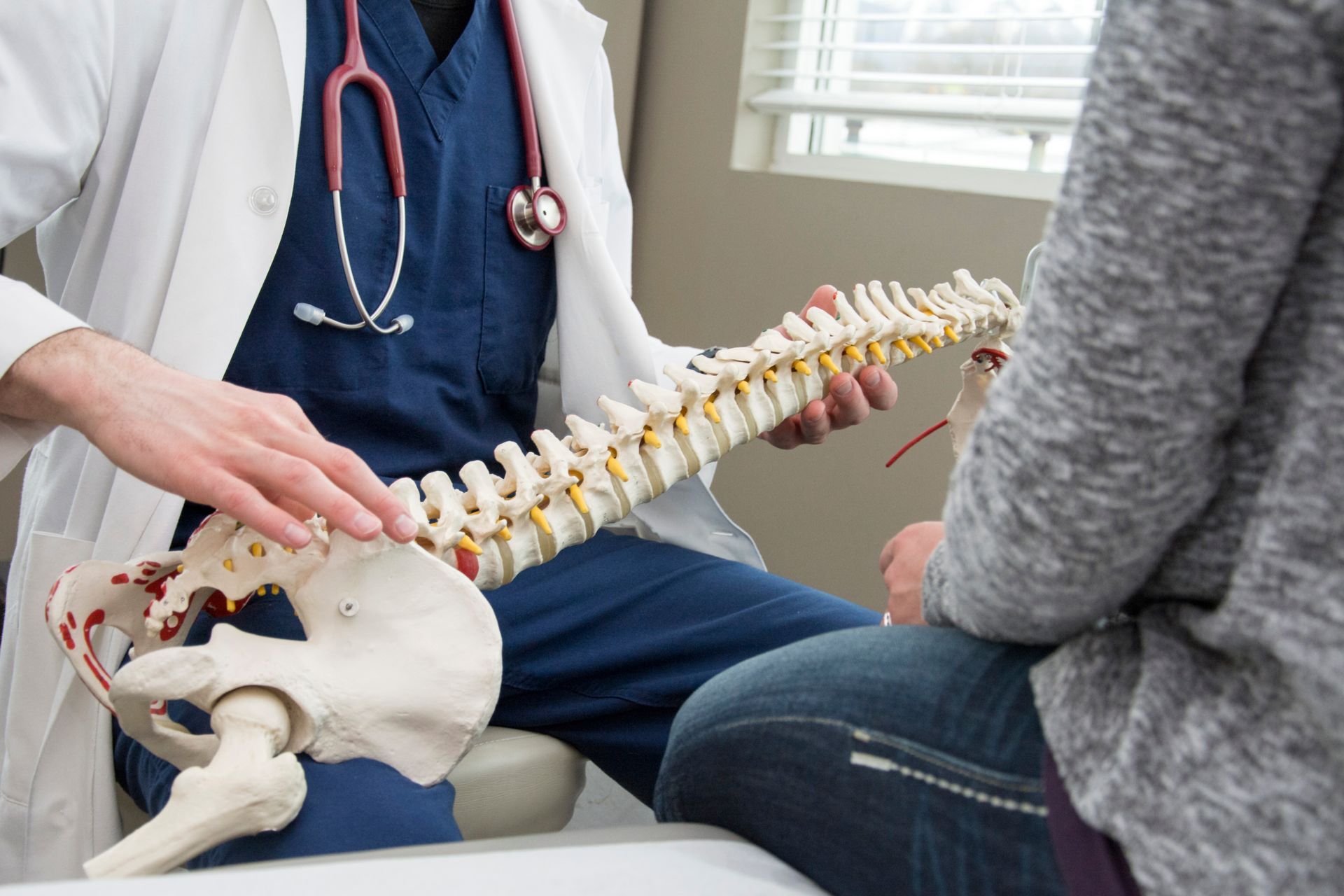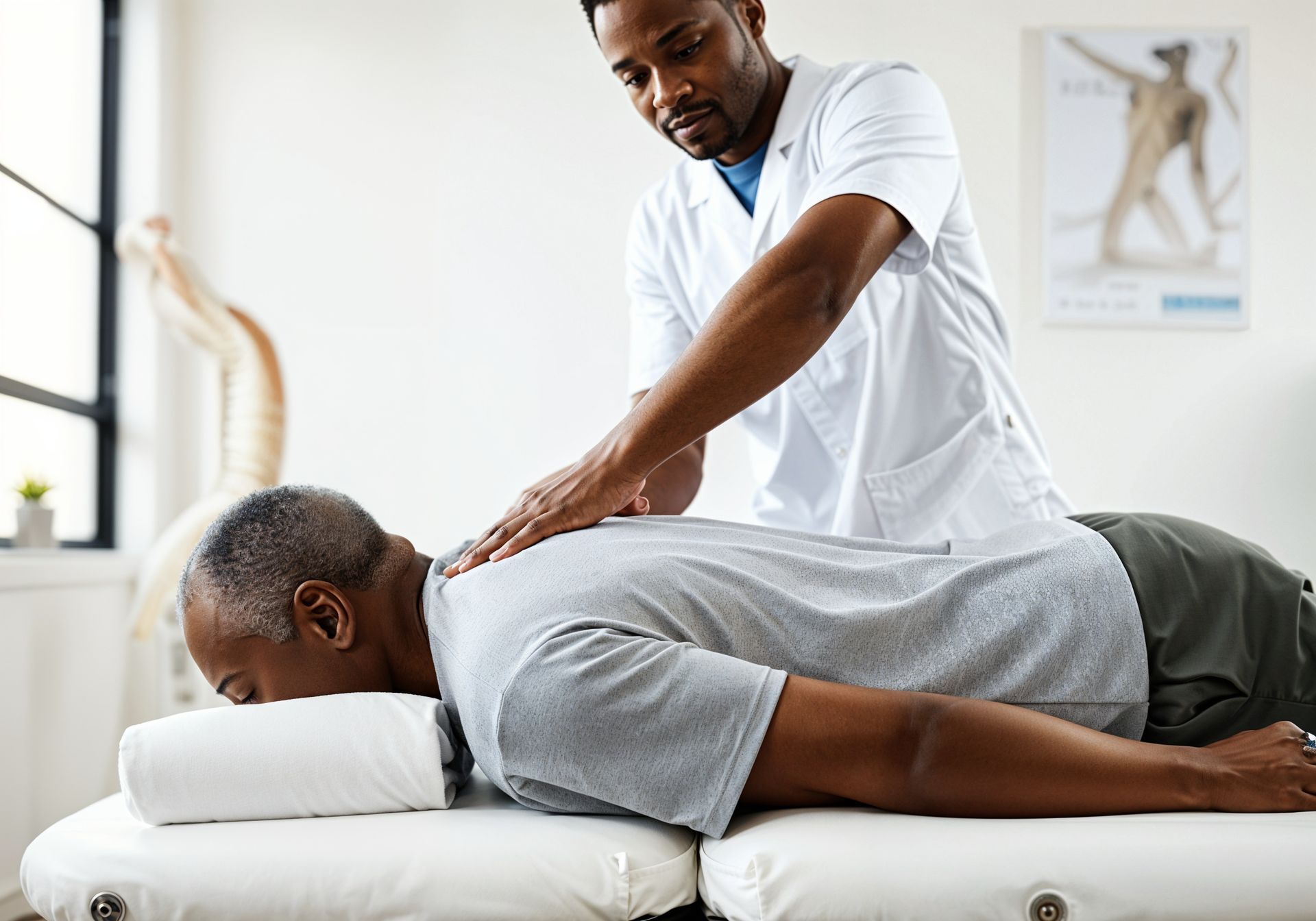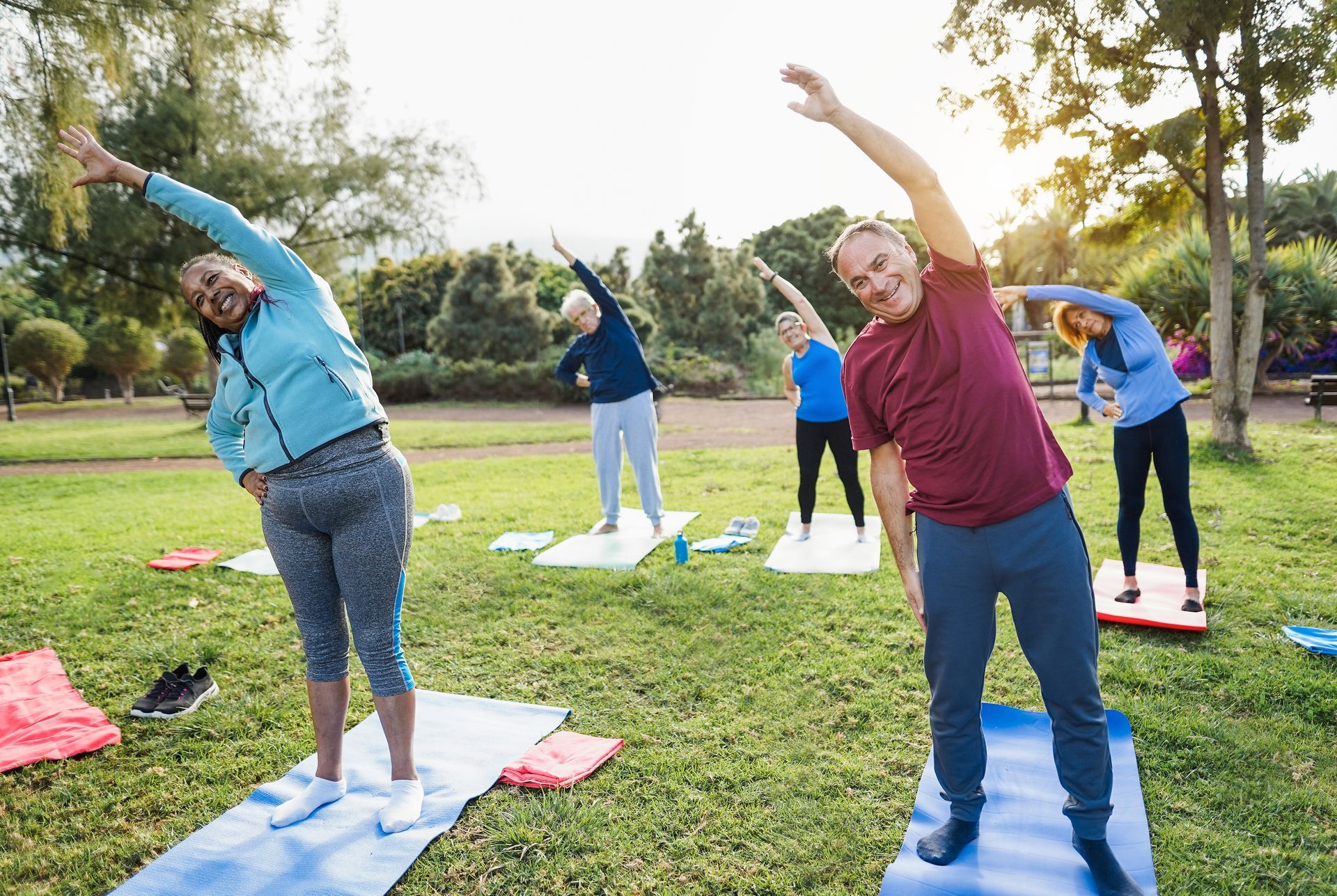The Connection Between Posture and Pain: How to Improve Spine Health
Are you constantly battling back pain, neck tension, or headaches? The culprit might be something you're doing right now as you read this article – your posture. With May being Correct Posture Month, there's no better time to explore how posture affects spine health and discover practical solutions to improve your daily comfort and long-term well-being.
The Hidden Impact of Poor Posture on Your Spine
Poor posture isn't just about appearances – it creates a domino effect throughout your entire body. When you slouch or hunch over your phone or computer, you're putting tremendous strain on your spine that wasn't designed to handle such positioning for extended periods.
Your spine naturally forms an S-curve when viewed from the side, with gentle curves in your neck, mid-back, and lower back. These curves work together to:
- Absorb shock
- Balance your body weight
- Enable flexible movement
- Protect your spinal cord
When poor posture disrupts these natural curves, the consequences can be far-reaching:
Immediate Effects of Poor Posture
That nagging pain you feel after a long day at your desk isn't just fatigue – it's your body signaling that something's wrong. Poor posture immediately increases pressure on your spinal discs and joints, forcing muscles to work harder than necessary to keep you upright. This leads to:
- Muscle tension and fatigue
- Reduced lung capacity
- Impaired digestion
- Decreased circulation
- Headaches and jaw pain
Long-Term Damage of Posture Problems
Over time, consistently poor posture can lead to more serious conditions that become increasingly difficult to reverse:
- Disc degeneration and herniation
- Chronic back and neck pain
- Decreased mobility and flexibility
- Pinched nerves and radiculopathy
- Increased risk of injury
Common Posture Mistakes That Lead to Back Pain
Most of us make posture mistakes without even realizing it. Here are the most common culprits:
- Tech Neck: Constantly looking down at phones and tablets, creating excessive strain on the cervical spine
- Desk Slouch: Hunching forward at computer workstations
- Sleep Positioning: Using improper pillows or sleeping in positions that don't support spinal alignment
- Standing Imbalance: Shifting weight to one leg or locking knees when standing
- Heavy Bag Syndrome: Carrying unbalanced loads like purses, briefcases, or backpacks on one shoulder
How Chiropractic Adjustments Improve Posture
Chiropractic care offers a natural, non-invasive approach to correcting postural issues and relieving associated pain. When your spine is properly aligned, maintaining good posture becomes easier and more natural.
Chiropractic adjustments for posture work by:
- Restoring proper joint mobility
- Reducing muscle tension and imbalances
- Retraining your body's postural habits
- Enhancing nervous system function
- Relieving pain that might be causing compensatory postures
At Cannon Chiropractic, our comprehensive approach examines the root causes of your postural challenges. Rather than merely treating symptoms, we develop customized treatment plans that address your specific needs through targeted adjustments, therapeutic exercises, and practical lifestyle modifications. Learn more about our specialized chiropractic services.
7 Best Posture Tips for Back Pain Relief
Ready to take control of your spine health? These practical tips can help you improve your posture and reduce back pain:
1. Set Up an Ergonomic Workspace
Ensure your computer screen is at eye level, your feet rest flat on the floor, and your arms form a 90-degree angle at the elbow when typing. Consider a standing desk option to vary your position throughout the day.
2. Practice the Wall Test
Stand with your back against a wall, making sure your heels, buttocks, shoulders, and head all touch the wall. Step forward and maintain this alignment as you move through your day.
3. Strengthen Your Core
A strong core provides vital support for your spine. Focus on exercises that target your abdominal and back muscles to create a natural corset of stability around your spine.
4. Take Movement Breaks
Set a timer to remind yourself to stand, stretch, and walk for at least 5 minutes every hour when working at a desk.
5. Be Mindful During Daily Activities
Pay attention to your posture during everyday tasks like brushing your teeth, washing dishes, or watching TV. These moments add up to significant time and impact on your spine.
6. Choose Supportive Footwear
High heels and completely flat shoes can both negatively affect your posture. Opt for supportive shoes with proper arch support.
7. Sleep Smart
Invest in a medium-firm mattress and a pillow that maintains proper neck alignment. Side sleepers should place a pillow between their knees to keep the spine neutral.
When to Seek Professional Help for Posture Issues
While these self-help strategies are valuable, certain signs indicate it's time to seek professional help:
- Pain that persists despite your best efforts
- Noticeable changes in your posture or spine curvature
- Difficulty standing straight without discomfort
- Pain that radiates down your arms or legs
- Headaches that occur regularly
Transform Your Posture, Transform Your Life
This Correct Posture Month, make a commitment to your spine health that will benefit you for years to come. Small, consistent changes in how you sit, stand, and move can dramatically improve your quality of life and prevent future problems.
At Cannon Chiropractic, we're dedicated to helping you achieve optimal spine health through evidence-based chiropractic adjustments, personalized posture training, and comprehensive wellness care. Our team specializes in identifying the underlying causes of your posture-related pain and developing effective solutions tailored to your unique needs.
Ready to stand taller, move more freely, and live without the burden of posture-related pain? Schedule a posture assessment with our expert team today and take the first step toward better spine health!











